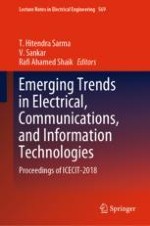2020 | Book
Emerging Trends in Electrical, Communications, and Information Technologies
Proceedings of ICECIT-2018
Editors: Dr. T. Hitendra Sarma, Prof. V. Sankar, Dr. Rafi Ahamed Shaik
Publisher: Springer Singapore
Book Series : Lecture Notes in Electrical Engineering
